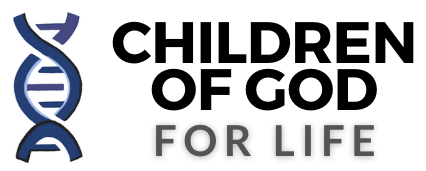Latest Scientific Discoveries And Data Announcements Pertaining To Cord Blood Stem Cell Banking Technology And Treatment Options
Article Date: 29 May 2007
Cord Blood Stem Cells Have Distinct Clinical Benefits
Today, the three primary sources of stem cells for either scientific study or therapeutic use are: embryonic, adult (which includes bone marrow and peripheral blood) and cord blood.
Used only experimentally in scientific study since 1998, embryonic stem cells remain highly controversial. Although research indicates they have significant therapeutic potential, researchers have yet to determine how to control their growth, guide their development into specific cell types or utilize them in human treatments.
Conversely, adult stem cells have been used in a variety of treatment areas for more than 40 years and have proven therapeutic value. Although effective, bone marrow stem cells are obtained in an invasive, complicated and painful procedure and do not grow or increase as rapidly as those found in cord blood. While the collection of peripheral blood stem cells is less invasive, these cells have many of the same properties as bone marrow stem cells, and thus many of the same potential limitations.
Umbilical cord blood, long considered a “waste product” of the birthing process, is a rich source of readily-available, easily-acquired stem cells. Cord blood stem cells have been used successfully for more than 20 years. Currently, they are used to treat approximately 70 diseases including immunodeficiences; genetic and neurological disorders; some cancers; and blood disorders, such as leukemia, lymphoma, sickle cell anemia, and aplastic anemia. Today, physicians have performed more than 8,000 cord blood stem cell transplants worldwide. These stem cells hold vast therapeutic promise to address major unmet medical needs and are increasingly being used in medical therapies to improve – and save – lives.
Cord Blood Stem Cells Result in Excellent Transplant Outcomes
The use of cord blood stem cells is quickly becoming a viable option for many diseases previously treated with bone marrow. Cord blood stem cell treatments differ from bone marrow stem cell treatments in three key areas: increased tolerance of HLA-mismatching, decreased risk of graft-versus-host disease and enhanced proliferation ability.
Human Leukocyte Antigen (HLA)-matching refers to six of the many proteins that appear on the surface of white blood cells and other tissues in the body. These six HLA genes, or loci, help determine compatibility between donor and recipient. Because cord blood stem cells are immunologically “younger” than bone marrow stem cells, a greater degree of mismatch between donor and recipient cells is tolerable with cord blood stem cells. Conversely, bone marrow stem cell transplants require either autologous (one’s own) stem cells or closely matched donor cells that may be difficult to obtain.
In addition, stem cells from a related donor have an even greater chance of HLA matching. Three of the six HLA genes required for a ‘match’ are inherited as a complete set from each parent, and because cord blood stem cells require fewer matches than bone marrow, cord blood stem cells from a related donor, such as a sibling, provide the greatest likelihood for a match. In fact, research suggests that cord blood stem cell transplants from HLA-matched, genetically-related sources are associated with twice the survival as compared with cord blood stem cells from an unrelated donor.
Cord blood stem cell transplants also result in decreased rates of graft-versus-host disease (GVHD), one of the most common and life-threatening side effects of a transplant. This is most likely because cord blood stem cells are less mature than bone marrow stem cells, and therefore less likely to attack the patient’s body.
Finally, cord blood stem cells are more proliferative than bone marrow stem cells. Cultures of cord blood stem cells increase in cell number far more rapidly than do similar cells from bone marrow.
Cord Blood Stem Cells: The Future of Stem Cell Therapy
The National Marrow Donor Program predicts that cord blood will exceed bone marrow as a preferred stem cell source for transplants within the next year. Given the widespread availability of cord blood, these cells will likely play an important role in the future of stem cell therapy.
Emerging Science Shows Potential for Additional Cord Blood Stem Cell Applications
Nearly 80 clinical trials studying the uses of cord blood stem cells are currently registered with the FDA, and science suggesting the future potential of cord blood stem cells is growing every day. Many scientists and leading industry physicians believe the greatest potential for cord blood stem cells lies in the possibility for its use in regenerative medicine – the science of using the body’s own cells to repair or replace damaged tissues and organs. Regenerative medicine studies are underway in a variety of treatment areas including heart disease, diabetes, stroke, Parkinson’s, spinal cord injuries, amyotrophic lateral sclerosis, Alzheimer’s, muscular dystrophy and liver disease. In addition, umbilical cord blood may one day be used as a conduit for cell-based gene therapy.
Cord Blood Registry
1200 Bayhill Drive, Suite 301
San Bruno, California 94066
http://www.cordblood.com/

God bless you both and your growing family! Your work has been appreciated beyond words. I look forward to your…
Science and medicine proclaim to want to save lives with sick innovation and research like we just read about but…
Want information to be in English
Dear GOD! Have mercy on this. Makes me want to vomit.